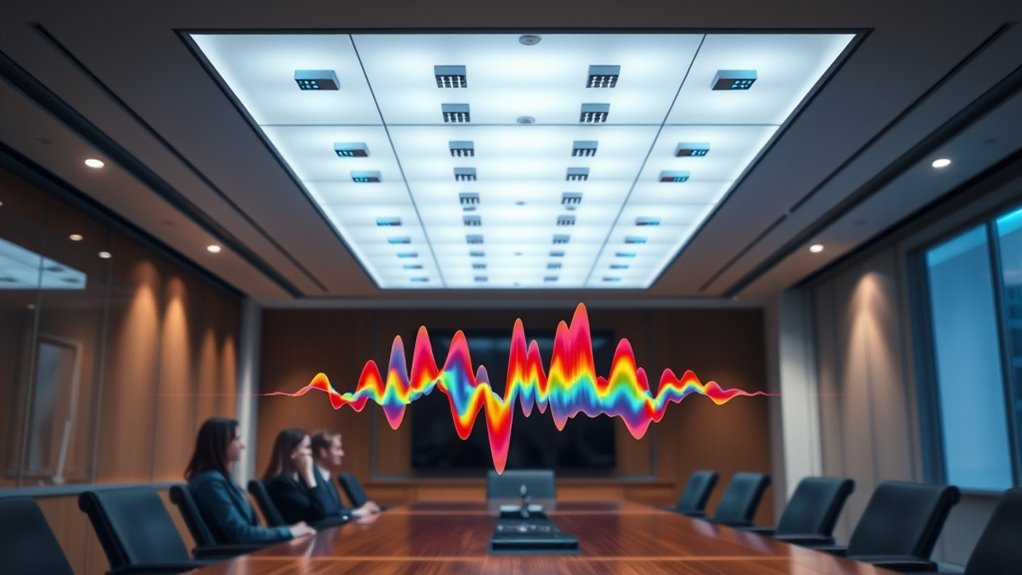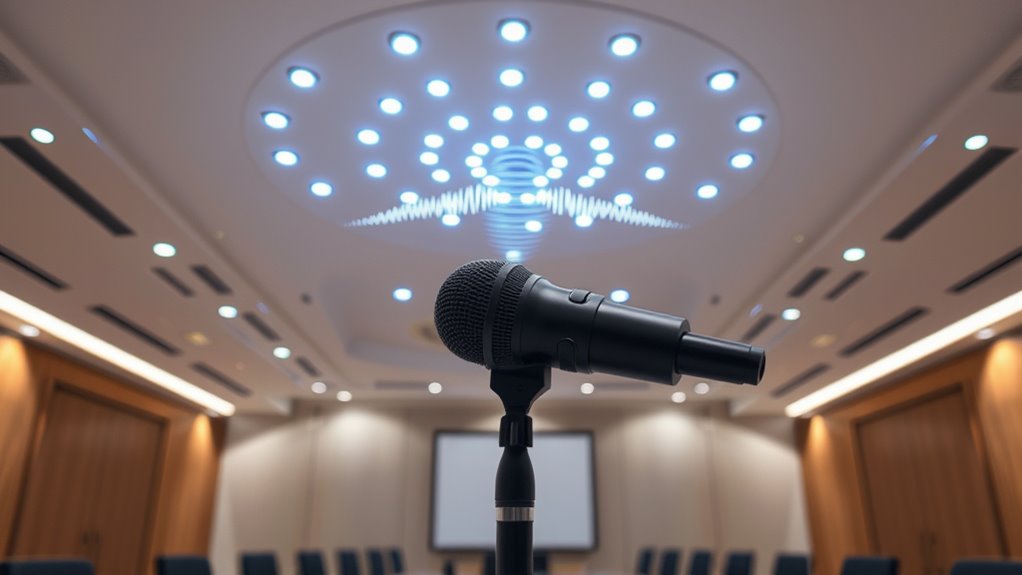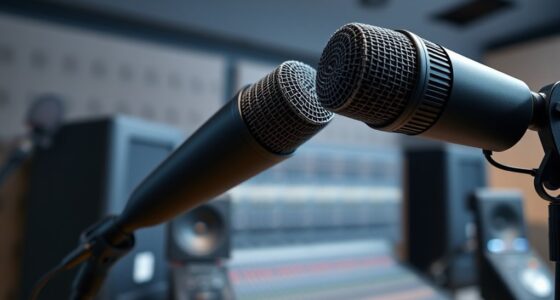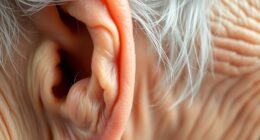Ultra-wideband (UWB) enables precise audio localization by using its broad frequency range to gather detailed spatial information quickly. It employs advanced signal processing algorithms to analyze the time differences and phase information of sound waves, helping you pinpoint where sounds originate even in noisy environments. Beamforming techniques focus sensor sensitivity toward specific directions, improving accuracy and filtering out interference. Keep exploring how combining these technologies can enhance your audio tracking capabilities.
Key Takeaways
- UWB’s broad bandwidth provides detailed temporal and spectral data for precise sound source positioning.
- Beamforming techniques focus sensor arrays toward specific directions, improving signal clarity and localization accuracy.
- Signal processing algorithms analyze time-of-arrival and phase information to mitigate multipath effects.
- Combining beamforming with adaptive algorithms allows real-time, high-resolution localization even in noisy environments.
- The high spatial resolution of UWB enables accurate source identification amidst echoes and overlapping sounds.

Ultra-wideband (UWB) audio localization is transforming how we accurately determine the position of sound sources in real time. Its ability to deliver high-resolution spatial data relies heavily on advanced signal processing methods, especially beamforming techniques and sophisticated algorithms. When you deploy UWB systems, you harness the power of these technologies to isolate and identify sounds with remarkable precision, even in noisy environments. Beamforming techniques focus the sensor array’s sensitivity toward specific directions, effectively amplifying signals coming from a target source while suppressing irrelevant noise. This directional focus enhances the system’s ability to distinguish between multiple sound sources and improves overall localization accuracy.
Signal processing algorithms play a critical role in interpreting the raw data collected by UWB sensors. These algorithms analyze the time-of-arrival (TOA) and time-difference-of-arrival (TDOA) of signals to calculate the exact position of a sound source. By processing the phase and amplitude information, they refine the localization estimates, reducing errors caused by multipath reflections or interference. As you work with UWB audio systems, you’ll find that these algorithms continuously adapt to changing conditions, ensuring the localization remains accurate even when the environment introduces challenges like echoes or overlapping sounds. Additionally, the integration of filtering techniques helps improve signal clarity and reduces noise interference, further enhancing localization precision.
The integration of beamforming techniques with robust signal processing algorithms creates a powerful combination. You can steer the focus of your sensor array dynamically, honing in on specific sound sources as they move through space. This adaptability is especially valuable in complex settings like crowded rooms or outdoor environments, where multiple sound sources may be active simultaneously. By continuously adjusting the beamforming parameters and processing incoming signals in real time, your UWB system maintains precise localization with minimal latency.
Furthermore, UWB’s broad bandwidth enables it to capture detailed temporal and spectral information, which these algorithms leverage for fine-grained analysis. This leads to higher spatial resolution and better noise resilience. You, as a user, benefit from this by gaining accurate, real-time positioning data that can be integrated into various applications—be it robotics, surveillance, or augmented reality. In essence, the combination of beamforming techniques and advanced signal processing algorithms empowers UWB audio localization to deliver unprecedented accuracy, reliability, and responsiveness in dynamic environments.
Frequently Asked Questions
How Does UWB Compare to Bluetooth for Audio Positioning?
You’ll find that Ultra-Wideband (UWB) outperforms Bluetooth in audio positioning. UWB offers superior beamforming accuracy, allowing for precise location tracking, and has lower latency differences, making real-time audio localization more reliable. Bluetooth, while more common, struggles with accuracy and higher latency, which can cause delays and less precise audio targeting. So, if you need exact audio positioning, UWB is the better choice.
What Are the Cost Implications of Implementing UWB Systems?
You might think implementing UWB systems is costly, but a thorough cost analysis shows potential savings through improved accuracy and efficiency. While initial implementation challenges, like infrastructure upgrades, can seem high, long-term benefits outweigh these costs. Investing in UWB can reduce errors, streamline operations, and enhance user experience, making the overall expense worthwhile. Carefully evaluating the balance between implementation challenges and long-term gains helps you make informed decisions about adopting UWB technology.
Can UWB Work Effectively in Noisy or Crowded Environments?
You might wonder if UWB works well in noisy or crowded environments. It does, thanks to interference mitigation techniques that reduce signal disruption. UWB’s environmental adaptability allows it to distinguish signals even amid background noise and crowd chatter. This ensures accurate audio localization, making it effective despite challenging conditions. So, with proper interference mitigation, UWB remains dependable for precise audio tasks in busy settings.
What Are the Privacy Concerns Related to UWB Audio Tracking?
Imagine a world where your every move is tracked—UWB audio tracking raises serious privacy risks. You might worry about unauthorized access or misuse of your data security, exposing sensitive conversations or locations. While UWB offers precise localization, it also means your personal space could be compromised. Staying aware of these privacy concerns helps you advocate for strict controls, ensuring your data remains safe and your privacy protected.
How Scalable Is UWB Technology for Large Venues or Events?
You’ll find UWB technology quite scalable for large venues or events, provided you meet the necessary infrastructure requirements. It’s designed to accommodate increased device density and can be expanded with additional sensors and transmitters. Venue scalability depends on your planning and investments in robust infrastructure, which ensures accurate audio localization across vast spaces. With proper setup, UWB can deliver precise tracking even in complex, large-scale environments, making it ideal for big events.
Conclusion
As you explore ultra-wideband audio localization, you’ll realize how this technology seamlessly combines precision and speed, transforming how we interact with sound. Imagine a world where your devices instantly pinpoint your voice or position, making communication clearer and smarter. With ultra-wideband, that future is within reach—where every sound is accurately mapped to you. Isn’t it exciting to think how this coincidence of innovation and practicality will reshape your everyday experiences?











